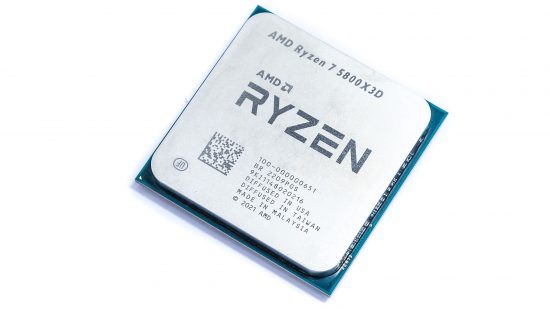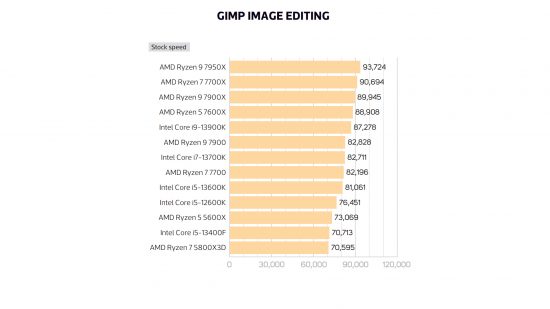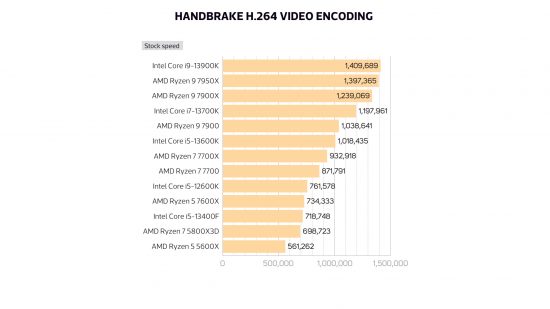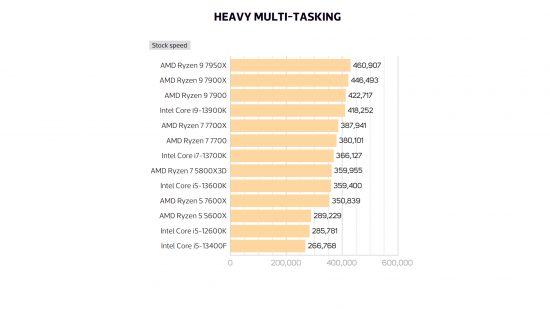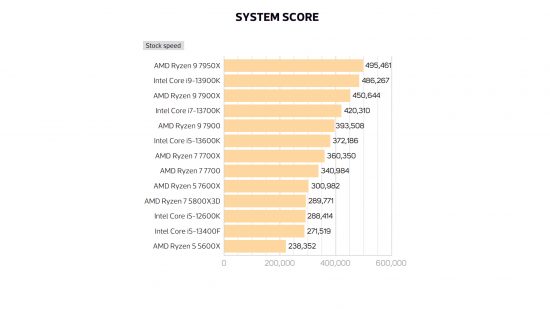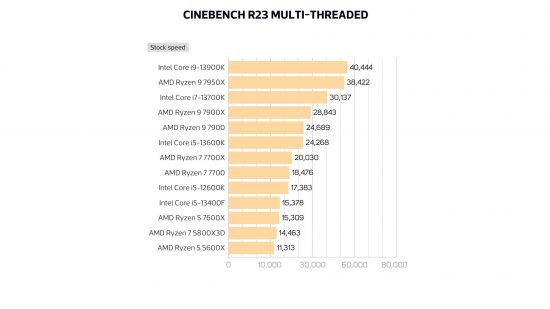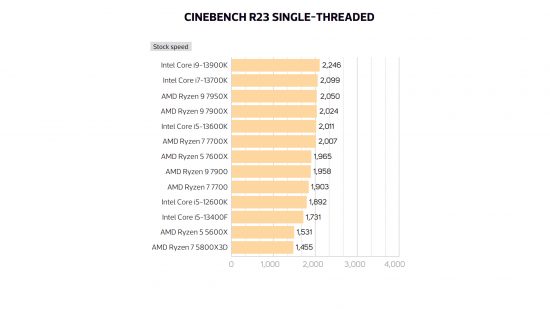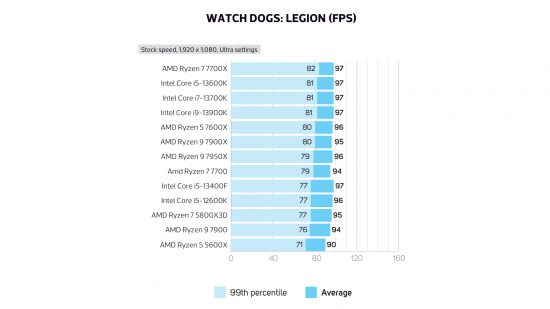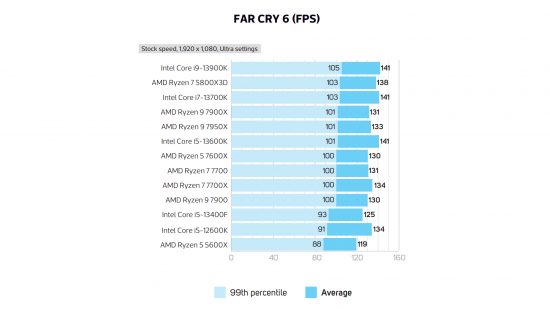Our Verdict
73%A great gaming CPU for the most part, but it represents poor value for content creation.
In some ways, AMD has partially shot itself in the foot with the Ryzen 7 5800X3D, giving Socket AM4 customers a great gaming upgrade thanks to its FPS-boosting 3D V-Cache, and without the need to upgrade to the company’s Socket AM5 platform.
In effect, the existence of the 5800X3D has made the high prices of AMD’s Socket AM5 platform even more unpalatable, given that it doesn’t require any memory or motherboard upgrades to give you a solid boost in gaming performance.
At Custom PC, we’ve been reviewing the latest CPUs since 2003, and we’ve tested and overclocked hundreds of CPUs, going right back to the Pentium 4 and Athlon XP era. We’ve developed an expert testing methodology that covers all the key areas of performance, including single-threaded and multi-threaded performance, as well as gaming.
Our benchmarks include our very own RealBench suite, which had a GIMP image editing test that stresses single-threaded performance, and a Handbrake H.264 video encoding test to gauge multi-threaded performance, as well as multi-tasking tests.
We also use the single and multi-threaded tests in Cinebench, as well as Far Cry 6 and Watch Dogs: Legion. For our game tests, we record the 99th percentile and average frame rates, and finally, we also measure the idle and load total system power consumption at the wall, while running Prime95’s smallest FFT test with AVX disabled. For more information, see our How we test page.
Unsurprisingly, AMD is looking to claw back some cash with this CPU. Unlike the rest of the Zen 3 lineup, it still commands a decent premium. It currently costs $100 more than the standard Ryzen 7 5800X, which similarly has eight cores and 16 threads. In fact, this effectively last-gen, cache-boosted chip costs only a little less money than the latest eight-core Ryzen 7 7700X.
AMD’s new 3D V-Cache Zen 4 models are due to launch within weeks of this magazine going to the printers too. Even then, though, as a single great upgrade, the Ryzen 7 5800X3D also has the benefit of being backward-compatible with most motherboards kitted 300 and 400-series chipsets too.
Built using a 7nm manufacturing process, the added cache on the Ryzen 7 5800X3D works as a 41mm² extension sat directly on top of the core chiplet die, adding a whopping 64MB of extra L3 cache to give you 96MB in total. More cache means lower latency in a lot of processes, which will benefit a range of tasks, including performance in many games.
The downside is that this first-generation 3D V-Cache CPU saw temperatures top 90°C quickly when running at full load, so we don’t recommend trying to overclock it. The toasty temperatures have also prompted AMD to rein in the clock frequencies of this chip compared to the eight-core Ryzen 7 5800X.
Accordingly, the Ryzen 7 5800X3D’s peak boost is 200MHz lower than that of the standard Ryzen 7 5800X, and its all-core boost is 300MHz lower. On the plus side, both air and water-cooling setups saw similar temperatures from this chip in our tests, so you don’t need an over-the-top cooling system to keep it in check.
Ryzen 7 5800X3D application performance
One issue with this CPU is its poor performance outside of games, thanks to those lower clock speeds. Its RealBench system score of 289,771 was much slower than that of the cheaper Ryzen 5 7600X, while its Cinebench multi-threaded score was trounced by the far cheaper Intel Core i5-13400F.
Ryzen 7 5800X3D gaming performance
In Far Cry 6, the Ryzen 7 5800X3D’s average frame rate of 138fps managed to beat the performance of all the Ryzen 7000-series CPUs we’ve tested recently, despite the age of the Zen 3 architecture, but the Core i5-13600K managed to beat it. The latest CPUs were mostly faster than the Ryzen 7 5800X3D in Watch Dogs: Legion too, but there are plenty of other games where it punches well above its weight.
Ryzen 7 5800X3D pros and cons
Pros
- Very fast in lots of games
- Works in Socket AM4 motherboards
- Cheaper system cost than Ryzen 7000 CPUs
Cons
- Mediocre non-gaming performance
- High temperatures
- No upgrade path
Ryzen 7 5800X3D specs
The AMD Ryzen 7 5800X3D specs list is:
| Base frequency: | 3.4GHz |
| Max boost frequency: | 4.5GHz |
| Core: | Zen 3 |
| Manufacturing process: | 7nm |
| Number of cores: | 8 |
| Number of threads: | 16 |
| IGP: | None |
| Simultaneous Multithreading (SMT): | Yes |
| L3 cache: | 96 MB |
| L2 cache: | 4MB |
| Memory controller: | Dual-channel DDR4, up to 3200MHz |
| Packaging: | AMD Socket AM4 |
| Thermal design power (TDP): | 105 W |
| Features: | Precision Boost 2, Precision Boost Overdrive 2, FMA3, F16C, SHA, BMI / BMI1 + BMI2, AVX2, AVX, AES, SSE4a, SSE4, SSSE3, SSE3, SSE2, SSE |
Ryzen 7 5800X3D price
The Ryzen 7 5800X3D price is comparatively expensive for its core count and clock speeds, but its extra cache provides big boosts in gaming performance. If that’s your priority it’s a good value upgrade for AM4 system owners.
Price: Expect to pay $310 (£330).
Ryzen 7 5800X3D review conclusion
The AMD Ryzen 7 5800X3D is still a solid option for gamers looking to spruce up an existing Socket AM4 system, offering increased frame rates, even if you have a last-gen GPU. As a drop-in fix it can save money over opting for a new motherboard and potentially memory too.
Since we published this review, rumors have also now appeared about a 6-core AMD Ryzen 5 5600X3D, which also reportedly uses 3D V-Cache. The 5800X3D isn’t great for content creation but, thanks to its excellent gaming performance, it easily makes it onto our best CPU for gaming list.
